7 Steps to Bring Your Houseplants Back Inside for the Winter (including Debugging them)
I’m sharing 7 step-by-step instructions to bring your favorite plants back inside for the winter. Including detailed information about how to “debug” your potted plants before they come inside.
It’s easy. I promise.
Let’s get started fellow plant lovers!
This post may contain affiliate links. Read our disclosure here.

My houseplants love spending the summer outside on the deck. There is always lots of new growth!
However, as fall approaches and brings cold temperatures , I start planning where and how to bring my tropical plants and succulents back indoors.
By late fall they’re all settled into their new indoor homes until next year.
When to Bring Houseplants Inside
As soon as the temperatures begin to cool off at night is a good time to plan where potted plants will live inside. At our house, ceiling hooks are waiting for hanging plants. Books are moved aside on the shelves.
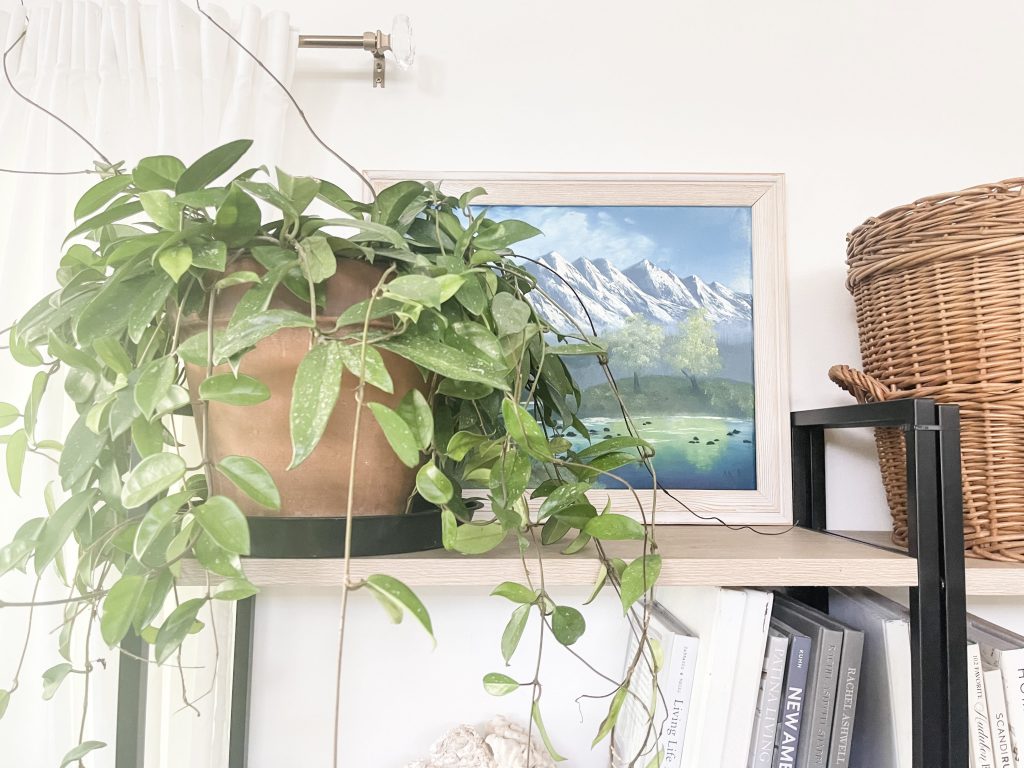
When the nighttime temperatures are regularly 50 degrees F(10 degrees C), I bring them indoors. Sometimes even sooner than that.
I take my time and give attention to one or two of my houseplants as they acclimate to their new space.
The succulents are more tolerant of cooler weather at night. For that reason, I focus on getting my tropicals inside first. I take about a week or even sometimes two.
Some of my plants will need repotting. I usually have pots on hand.
But it’s always fun to shop for new containers that will look great mixed in with my other decor.
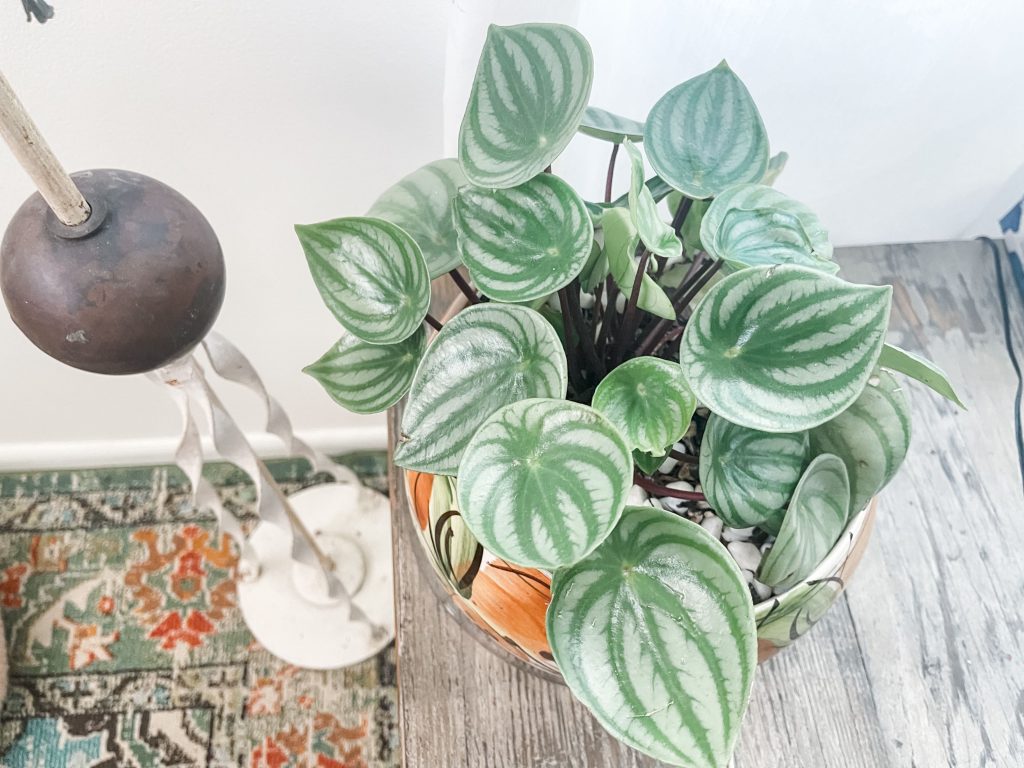
Tending to my indoor plants is such a rewarding hobby. I hate to hear of anyone giving up on their houseplants.
By learning a few simple tips, you can have fresh greenery in your home all winter.
I wrote this post to help everyone (that wants to) to be successful at it!
How To Debug Your Houseplants
This has to be my number one question about bringing houseplants back inside for the winter!
What about the bugs?
You’ll want to inspect the plants for signs of pests. Look at the underside of leaves where pests may be visible.
Leaf drop or spider webs could indicate spider mites.
Healthy plants may still have a couple of brown leaves or spent flowers.
However, they shouldn’t have a large amount of leaf drop or wilting. This can be a sign of unwanted bugs.
Purchase an organic Insecticidal Soap in a spray bottle. Spray leaves (top and undersides of leaves) and the top of the soil. That’s it!
An alternative is to mix up a bucket of soapy water (use dish soap). While the plant is still outside, pour the soapy water over the whole plant and soil. Let sit about 15-20 minutes.
Watch for any bugs to come up and remove them. Repeat as necessary.
Finish with a strong spray of water from the garden hose for a good rinse.
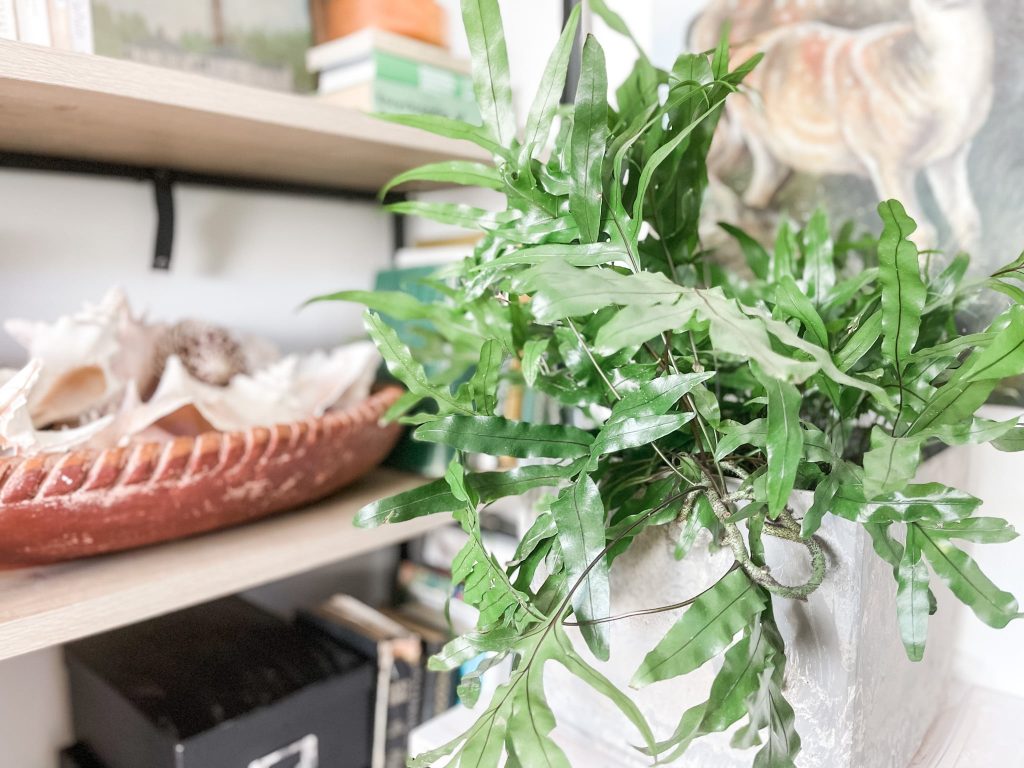
Let the plant drain thoroughly through drainage holes in the bottom of the pot.
A good rule of thumb is to look for the outside of the pots to be dry before bringing inside.
Make sure there is no excess water sitting in the plant saucer.
This can promote disease and root rot.
Mealy bugs are dreaded insect pests that can look like cottony spots.
Damage caused by mealy bugs includes yellowed and dropping leaves, distorted growth, and sooty black mold.
If you see evidence of mealy bugs, isolating your plant is a crucial step.
I’ve only had one case of mealy bugs and it was a losing battle because I caught them too late. If not caught early, they’re tough to get rid of.
To treat your houseplant use neem oil and cotton swabs. A magnifying glass is also nice to have.
With your cotton swabs, apply the neem oil directly to plant leaves and where it shows the signs mentioned earlier.
For a major infestation, you’ll want to change out to fresh potting soil. I cover more of that below.
Repot or Change out the soil
Many times I’ve added my houseplants to larger planters for the summer.
Before bringing them back inside I have to place my plants into a new pot with fresh soil.
You also might want fresh potting soil if your planting into a larger container or dividing into smaller pots.
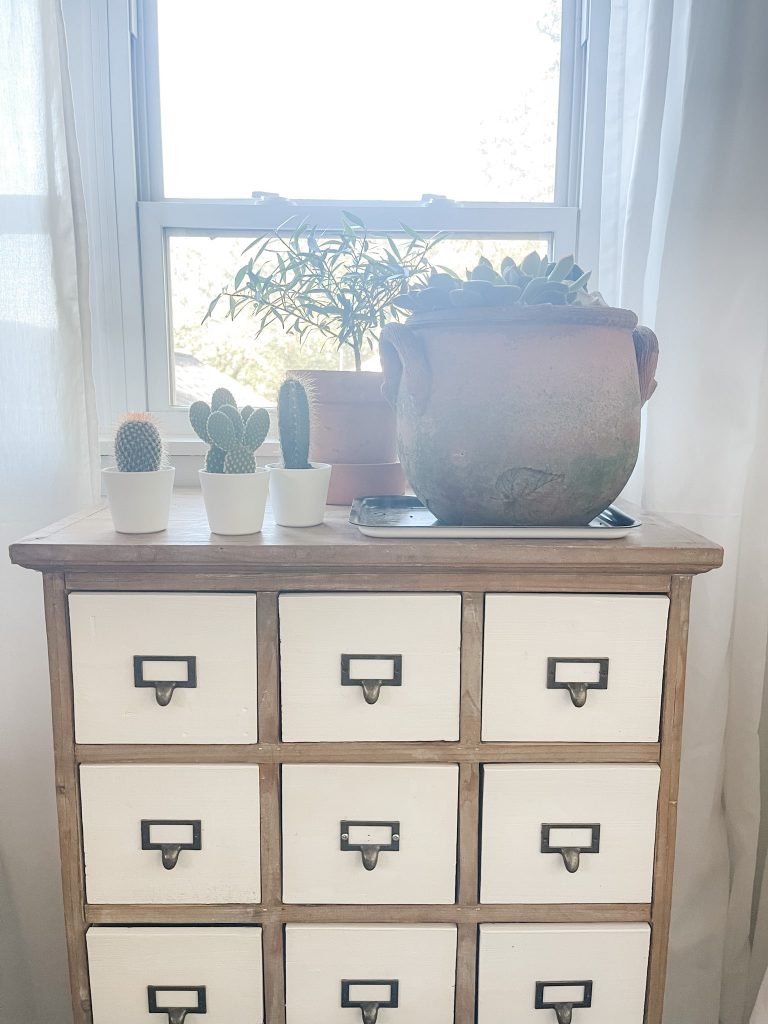
Choose the right potting mix for your indoor plant.
Whether it be a Cactus or Orchids, the mix will be suited to your particular plant.
Do your best to dig out the entire root ball when transplanting to a new container. Keep them in warm temperatures after transplanting so that it’s not a sudden change.
Monitor the soil moisture and don’t let your house plant get too dried out while it’s acclimating. Clean plant leaves regularly with just a little bit of lukewarm water to get the dust off.
It’s also a good idea to keep them out of cold drafts.
Clip spent flowers and leaves
When you’re bringing houseplants indoors is a great time to clip off any flowers or leaves that are brown or beginning to die.
You want all of the plant’s energy to go into acclimating in it’s new indoor environment.
Make sure you use clean, sharp scissors or a knife. Wash them in between using on each plant just to make sure you aren’t spreading a plant disease around!
Fertilize
Only when I bring them indoors for the first time do I fertilize. I use a weak solution of Fish Emulsion or Miracle Grow and lukewarm water.
This gives them a boost of added nutrients in the soil as they acclimate and helps prevent transplant shock.
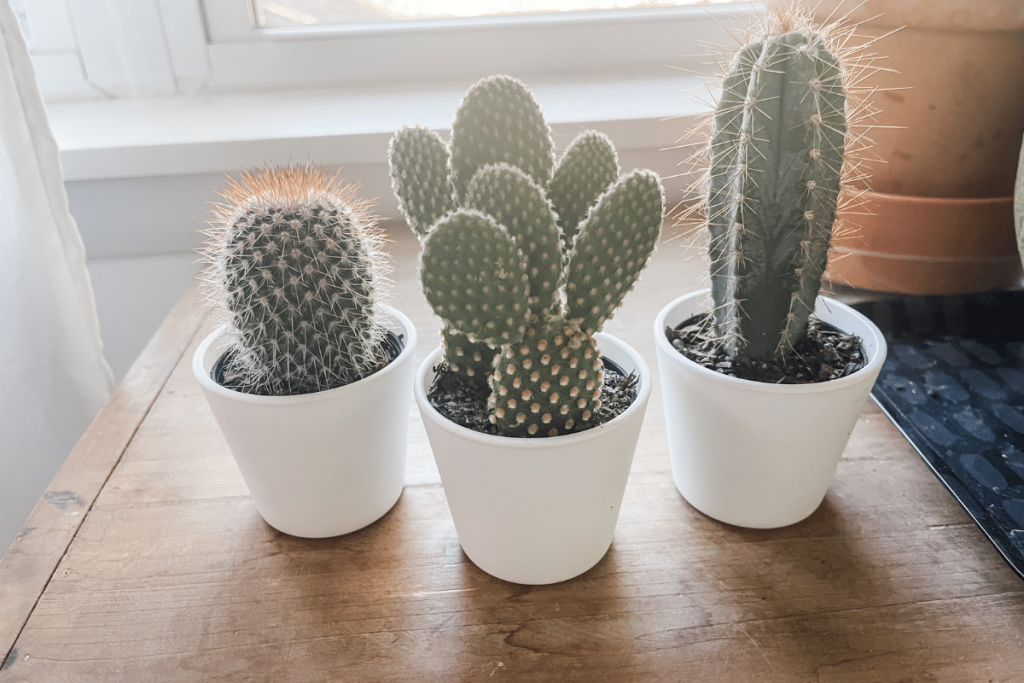
As a general rule, I don’t fertilize when I water them in the winter. Most of them aren’t in an active growing phase. I find that if the potting soil is in good shape, they don’t need it.
Place plants in their best light
If you want your indoor plants to thrive during the winter, pay attention to the light levels needed for your specific plants. Some love full sun. Others don’t need as much light to be happy.
In general, succulents and cactus need a south or west facing window for enough light ( bright light). Plants like Orchids, Pothos, and Sansevieria can tolerate lower light conditions. This would include a North or East facing exposure which will be “less sun” locations.
If you’re house plants begin to stretch and grow towards the light source, they’re telling you that they need extra light. Move them to a brighter location.
Alternatively, investing in some grow light bulbs is a great way to keep them thriving.
Add Humidity
Heating our homes over the winter can produce indoor conditions that are as dry as a desert. Dry heat causes humidity levels are too low for many indoor plants to thrive.

I find that for the sake of plants (and people) to be most comfortable, a humidifier is a must.
We invested in a couple of larger ones for our indoor space. They can run for a couple of days continuously. I place them near my grouping of plants to keep them happy and healthy.
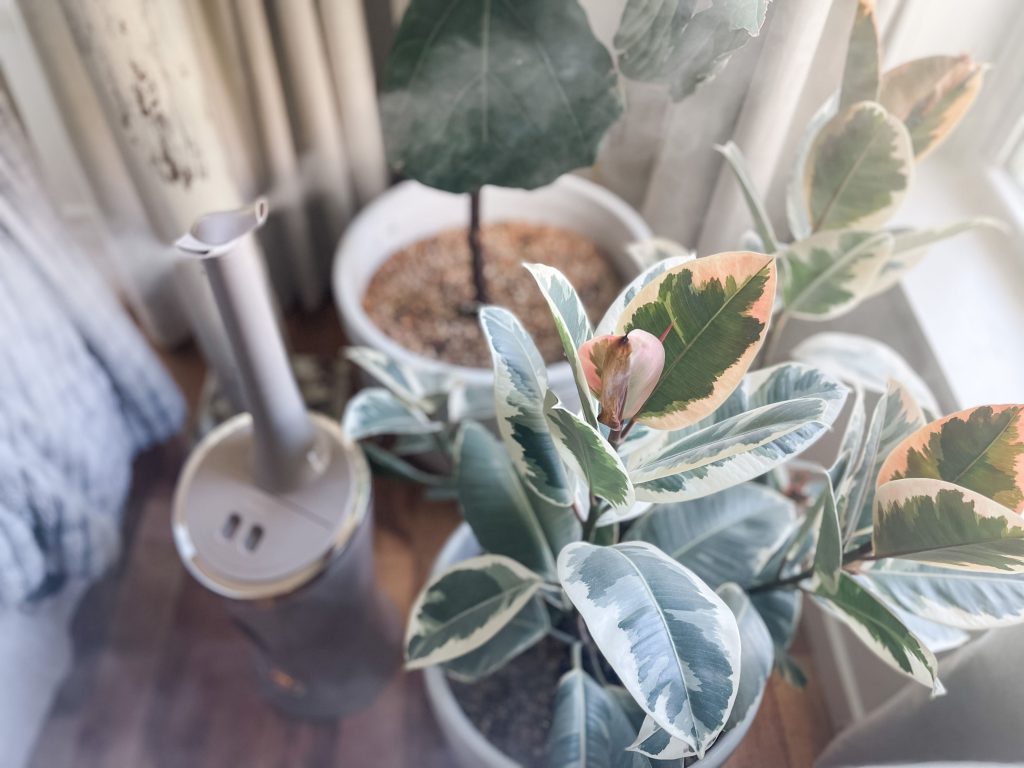
Conclusion
For thriving indoor plants follow these seven simple steps.
You can successfully bring your houseplants indoors for the winter and enjoy their beauty and fresh air benefits!
With proper care in the winter months, your houseplants will live happily for years to come.
Next Spring
When early spring comes, I won’t put my tender plants back outside until danger of frost has passed.
To be sure I’m well past the last frost date in my zone 6B, I usually wait until late May.
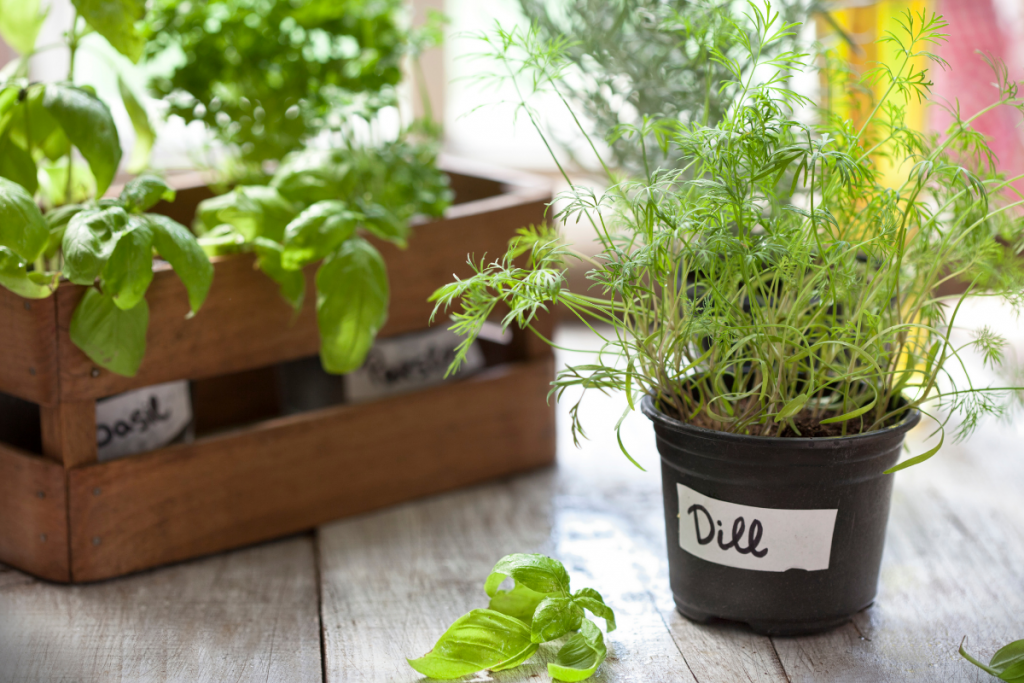
I hope this post helped you to feel confident in bringing your houseplants inside for the winter months.
Let me know in the comments if you have a question. Will you be bringing houseplants indoors during the colder months?




